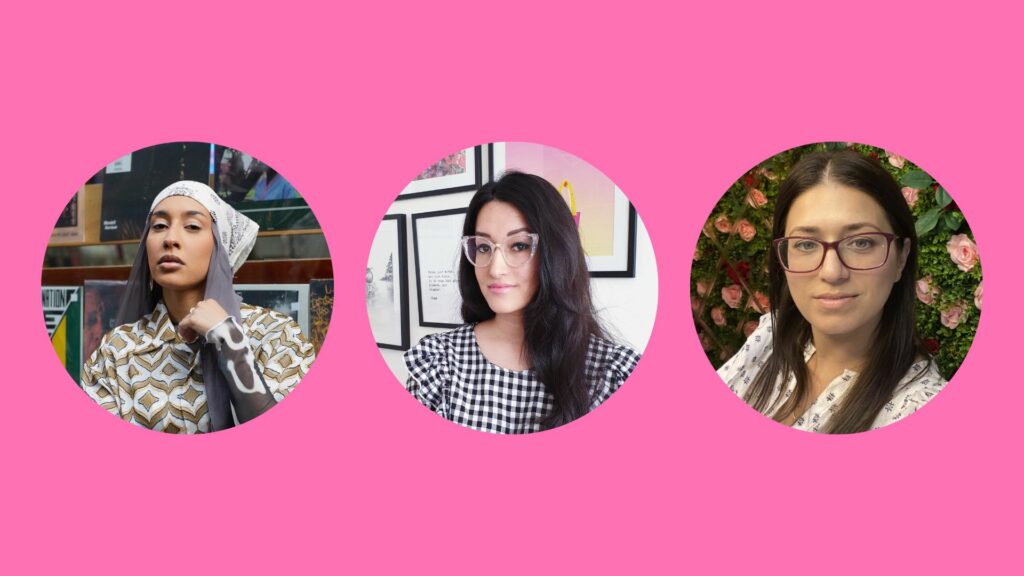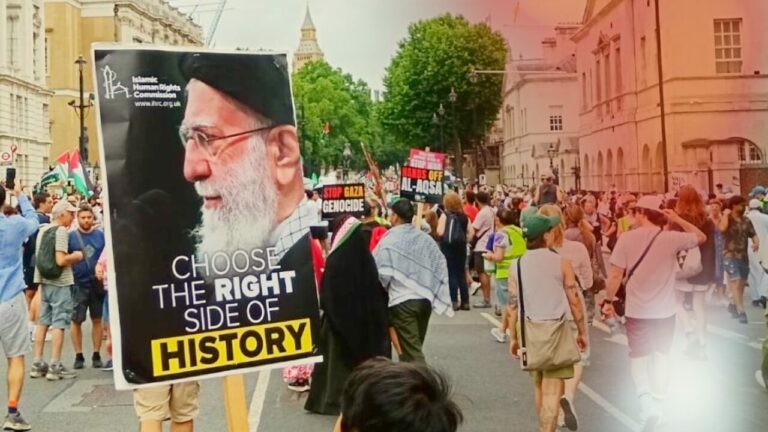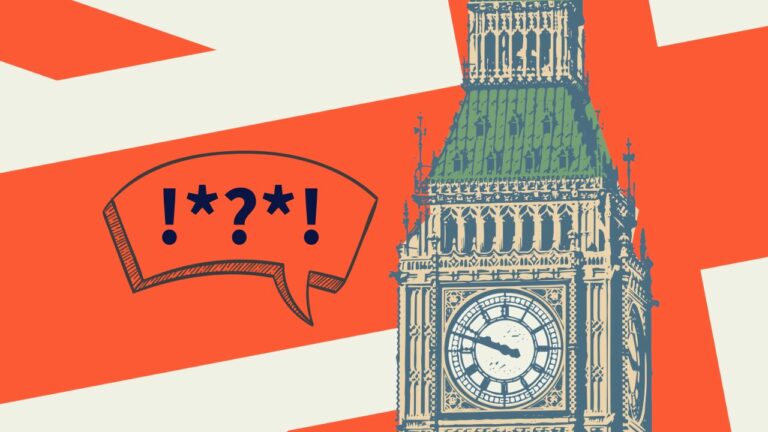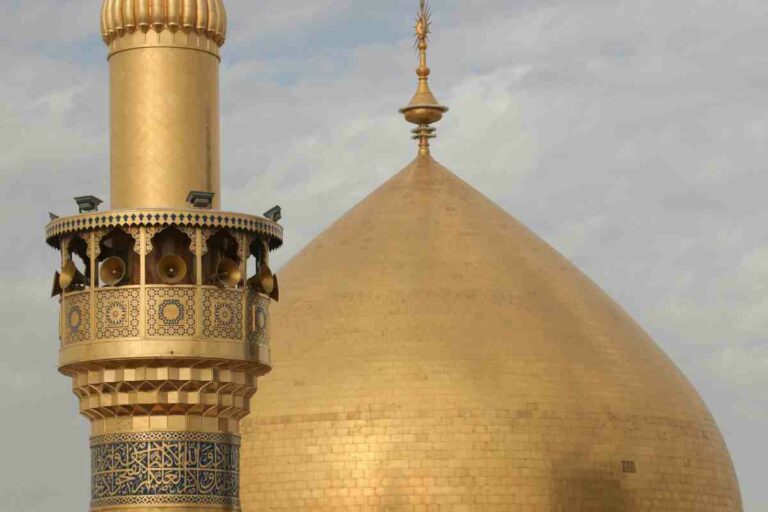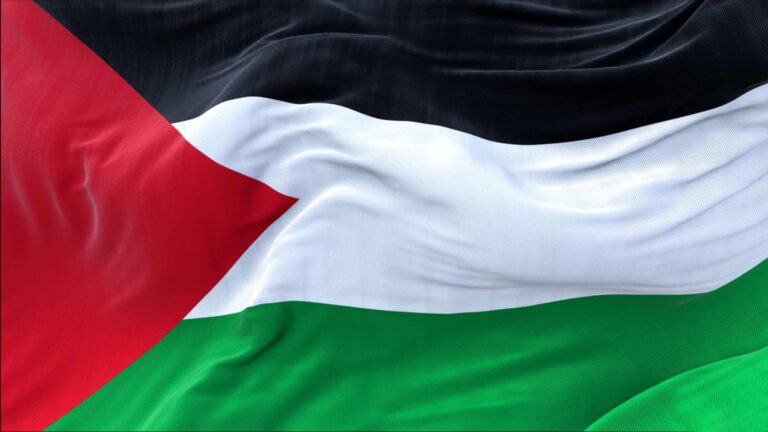On 20 June, IHRC held an author evening with Hafsa Lodi to discuss her book, Modesty: A Fashion Paradox. Hafsa was joined by model and writer, Mariah Idrissi. The discussion was chaired by author and founder of Waw Stories, Mariam Hakim.
WATCH THE AUTHOR EVENING:
Read an excerpt from the discussions below. Some of the dialogs have been edited for better readability.
Mariam Hakim: why was this chosen as the front cover?
Mariah Idrissi: it is a cover shoot for a magazine that I did for Turkey; I think you [Hafsa] found it online and Hafsa loved the pink and that’s just how it worked out
Hafsa Lodi: we had quite a few cover image options and we were close to finalising it until I saw this picture on Mariah’s Instagram. Why we thought it made a spectacular cover? First of all, the eye contact: I thought it was very strong. The colours: when you think of modesty and Islam, you think black abaya; we don’t think that but that might be the orientalist stereotypical idea of modest fashion especially when it comes to Muslim women. I liked the fact she is in a suit, a power suit; modest fashion is not just dresses and feminine wear.
I believe [Mariah] is also wearing Louis Vuitton and I think that is interesting to bring in that kind of [question]; is spending on designer clothing is that modest? That is explored in the book.
Mariam Hakim asked about the unique style Hafsa chose to write the book in:
Hafsa Lodi: the layout looks very different from the first draft, which started with the history of modest fashion, why women decide to dress modestly. I guess it was boring thinking back on it now. The publisher advised bringing in the politics right from the beginning and discuss why this is a political issue. So, it talks about politics then goes into the history of modesty across different cultures and faith groups, what modest fashion looks like today, how social media has not only impacted but catapulted modesty into the mainstream. Then the main personalities driving the movement, from models to entrepreneurs in the space, and what the future of what modest fashion might be.
MH: the book was launched in 2020 – did global events affect the marketing?
The pandemic brought to light a lot of the hypocrisies in modest fashion and Muslim women. Niqabi women have long been ostracised in the West and suddenly with Covid, everyone is wearing a facemask. There are still niqab bans and you can still get fined in some countries for wearing niqab even though your neighbour could be wearing a facemask.
MI: I didn’t grow up in a conservative Muslim household, it is only me and my mum that wear hijab. I was catapulted into the fashion industry [in 2015] and I didn’t just become a face, I had a political voice as well. I was doing interviews in South Korea and Colombia – places I did not think would have found out about the H&M campaign. I was asked questions like, “when did your parents force you to wear hijab?” or “at what point were you made to wear hijab?” – and I thought “made”? If I wanted to take off the hijab – which I don’t – but I still till now to exercise my freedom [to choose].
Anyone who is a Muslim visible is going to have that pressure to represent and be a spokesperson on any current affairs that are relevant. The H&M campaign was so big… suddenly there was this domino effect of like, ‘oh yes, Muslim women exist and they spend a lot of money, let’s involve them in our marketing plans’.
MH: Is modest fashion sexualising the hijab? Some images of Muslim women can be considered or called provocative.
HL: there was a Vogue Arabia cover that had a woman wearing hijab and a skin-coloured corset on top of clothing; she had apparently styled the outfit herself but there was a lot of uproar because the corset made it look like she was naked. It is not a western magazine, it is based in the Middle East. There is a lot of debate and discussion with this and I think it comes down to choice, what a woman is comfortable with. We know there are different levels of hijab and different ways of wearing hijab.
Mariah Idrissi: this is where it goes back to the essence; we do have clear guidelines of what hijab is – sometimes I observe that, sometimes I am a bit shaky. I think it is important for us to be aware and honest with ourselves in that instead of trying to justify things to make it more suitable for us. We are adding our own preferences and emotions and societal changes to everything to try to make things convenient for us, but at what cost? Obviously I am a Muslim so I will go back to Islam as my root to understand how to decipher what is black and white. There are things today that might be a bit tricky, so either use common sense or go to someone who has a better understanding to help navigate. You become more empathetic when you are honest, rather than being self-righteous.
The way I measure it is, can I pray in what I am wearing? Our cultures, from the first spread of Islam, have been wearing it their own way and so I think it is wrong when other cultures dictate how hijab should be worn. I have always been rocking turbans and I have received a lot of comments from a specific demographic saying ‘that’s not how to wear hijab’.
Mariah Hakim: could you talk about modest fashion for men?
HL: from an Islamic perspective, modesty is encouraged for men and women. Men have used modesty as a way to control women because men have always been in power. It is tricky; men are supposed to modest as well but of course in different ways. In terms of contemporary modest fashion, the movement seems to be focused on women; the hijab is the visible marker of Muslimness. What is men’s version of that? We see some men starting to wear thobes and Arabian cultural garments more, even here in the UK. There is also a modest men’s swimwear [and] men like Zaahid Ahmed and Subhi Taha that do great work in men’s fashion.
Mariam Hakim: what about modest fashion in different countries?
Hafsa Lodi: it is very culturally specific, modesty is very subjective. Rafiqa Azim, mentioned in the book, is a New York based hijabi model. She gave an example, in the Middle East the black abaya is seen to be a modest garment, you blend in with the crowd and you don’t stand out. In America, if I wear a black abaya I am going to stand out, I am going to attract attention, often negative attention, so for her the black abaya is not modest. She said in West Africa, their modest clothing is bold, vibrant, with beautiful prints and it not plain or black. Melanie Elturk, the founder of Haute Hijab, pointed out that in South Asia, skinny jeans might be considered Western and immodest, whereas in America, skinny jeans can be considered modest. It is very culturally subjective.
Mariah Idrissi: when I make my annual trip to Disneyworld, wearing an abaya would definitely draw more attention to myself. If we understand the concept of modesty beyond covering up the body, it is also about not drawing unnecessary attention. Of course, you can wear whatever you want, but be conscious that you are going to get looks.
During the Q&A, the panel answered questions and delved deeper into discussions around cultural appropriation, burkinis and non-Muslim women wearing them, Christian and Jewish orthodox women dressing modestly, terminology around modest fashion, internal modesty, hijab in sports, the many reasons why women would want to dress modestly beyond religion and culture, double standards with Muslim women dressing modestly and wearing niqab, high-end modest fashion and affordability, ethical fashion and sustainability, women’s rights and political influences, the male gaze, hopes for the book and a potential second edition.

